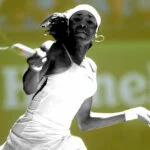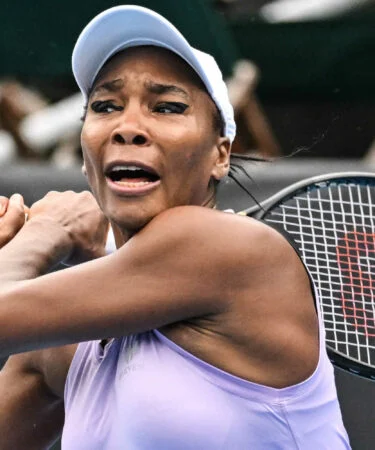July 2, 2005: The day Venus Williams beat Davenport in the longest Wimbledon women’s singles final
Each day, Tennis Majors takes you back in time to an important moment in the sport’s history. On this day in 2005, Venus Williams and Lindsay Davenport battled it out for 2 hours and 45 minutes for the Wimbledon singles title
 On this day Venus – Davenport 2/07/2021
On this day Venus – Davenport 2/07/2021
What happened exactly on that day?
On this day, July 2, 2005, at Wimbledon, Venus Williams and Lindsay Davenport played the longest singles final in the Ladies Championships history. Williams, who had defeated the same opponent at the same stage five years before to claim her first Grand Slam title, saved a match point and prevailed after two hours and 45 minutes of play (4-6, 7-6, 9-7). At the time, the American, ranked only No 16 following a 2003 season plagued with injuries, was also the lowest-ranked female player to ever win the tournament.
The players involved: Venus Williams and Lindsay Davenport
- Venus Williams: the four-time Grand Slam singles champion now ranked No 16
Venus Williams was born in 1980 in the United States. Coached by her father Richard, she was heralded as tennis prodigy since her first steps on the tour in 1994. However, it was not until 1997 that she broke into the top 100, obtaining her first significant result in Indian Wells by reaching the quarter-finals after defeating world No 9 Iva Majoli 7-5, 3-6, 7-5. She drew a lot of attention to herself thanks to her powerful groundstrokes and stunning athleticism, mixed with her charisma and the heavy promotion made by her father.
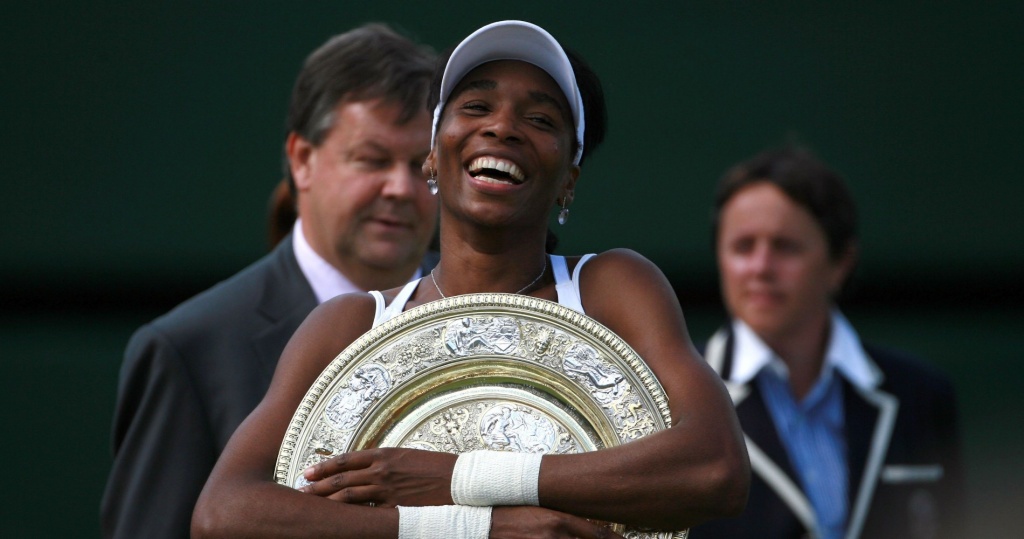
Her younger sister, Serena, was also beginning a career in professional tennis, and their father had boldly predicted that one day they would face each other in a Grand Slam final. In 1999 in Miami, Venus defeated Serena in the first ever all-sister final in tennis history (6-1, 4-6, 6-4). Following a first major final lost at the 1997 US Open against Martina Hingis (6-0, 6-4), Venus fulfilled her potential in 2000, triumphing at both Wimbledon and the US Open, each time defeating Lindsay Davenport in the final. In 2001, she defended both titles, defeating Justine Henin in the final at the All-England Club (6-1, 3-6, 6-0) and her sister Serena at Flushing Meadows (6-2, 6-4), making her father’s prediction come true. At the age of 21, she already held four Grand Slam titles, and with her deadly serve and her powerful groundstrokes it seemed that there were many more to come.
However, in 2002, after Venus had spent 11 weeks as world No 1, Serena overcame her after having defeated her in the finals of both Roland-Garros and Wimbledon before beating her as well in the US and Australian Open finals. Kept away from the courts by injuries in the second half of 2003, she struggled to come back to the top in 2004, finishing the year as world No 9. In 2005, when Wimbledon began, the former world No 1 had not reached the semi-finals of a Grand Slam event in two years, and she was only ranked No 16 in the world.
- Lindsay Davenport: The three-time Grand Slam singles champion
In July 2005, Lindsay Davenport, runner-up of the most recent Australian Open (defeated by Serena Williams, 2-6, 6-3, 6-0), was world No 1 since October 2004, although she had not lifted a major trophy since her triumph at the 2000 Australian Open. Davenport, born in 1976, turned professional in 1993, and entered the top 10 as soon as 1994. She finished runner-up at the WTA Championships (defeated by Sabatini 6-3, 6-2, 6-4), but in 1995, disturbed by family issues, she failed to hold on to her top 10 ranking. The following year she improved her physical conditioning and claimed her biggest title at the time at the Atlanta Olympics, where she defeated Arantxa Sanchez in the final (7-6, 6-2).
In 1997, Davenport won than six tournaments and reached the semi-final at the US Open, beaten by Martina Hingis 6-2, 6-4. She reached the top of the rankings in 1998, becoming world No 1 after a fantastic year during which she lost in the semi-finals at both the Australian Open and Roland-Garros before claiming her first Grand Slam title at the US Open, where she took her revenge against Hingis (6-3, 7-5).
In 1999 and 2000, Davenport added two major titles to her list of achievements, Wimbledon 1999 (defeating Steffi Graf in the final, 6-4, 7-5) and the 2000 Australian Open (where she beat Hingis once again, 6-1, 7-5). In the following years, Davenport remained a top 5 player, finishing world No 1 in 1998, 2001 and 2004 but she was still chasing a fourth Grand Slam title.
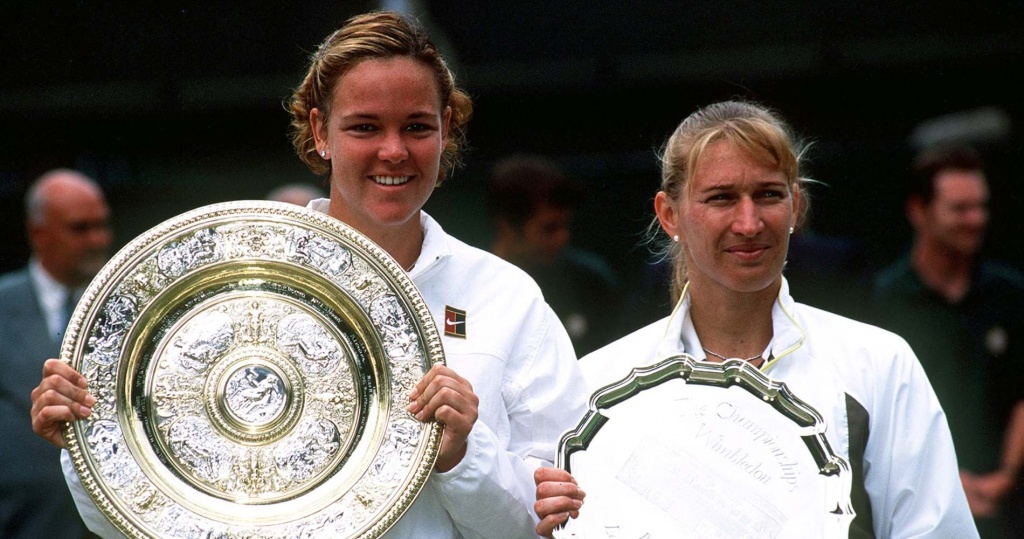
The place: Wimbledon
Wimbledon is the oldest and the most prestigious tennis tournament in the world. Held at the All-England Lawn Tennis & Croquet Club since 1877, it moved to its current location in 1922, the same year when the Centre Court was built. Considered by many as the most intimidating court in the world, with its famous Rudyard Kipling quote above the entrance (“If you can meet with triumph and disaster and treat those two impostors just the same”), Centre Court had seen the best players of all time competing for the title.
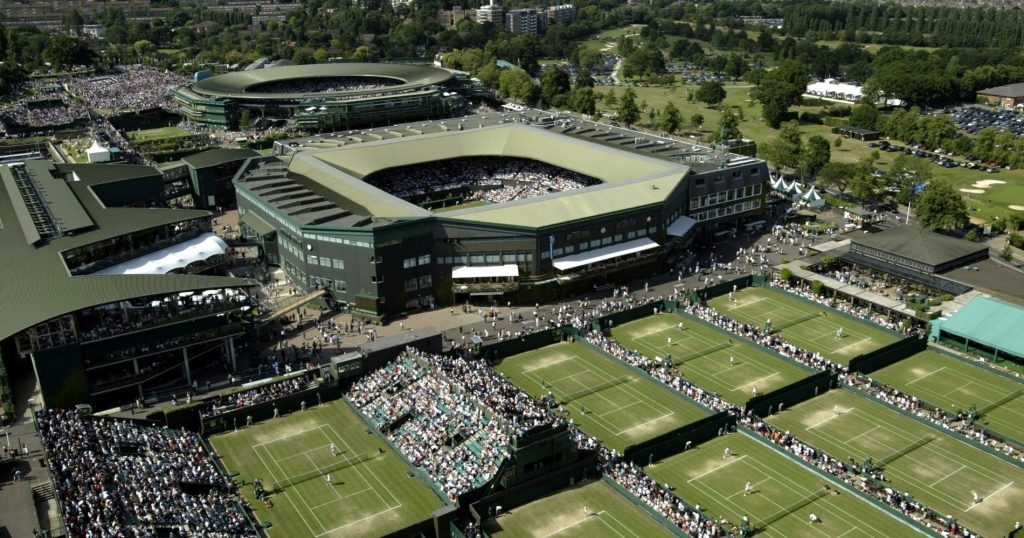
After the US Open switched to clay and then hard court in the 1970s, and after the Australian Open switched to hard court in 1988, Wimbledon remained the only Grand Slam tournament to be played on grass, a surface that is usually more suitable for serve-and-volley players. Not only did Wimbledon keep its surface, but it also maintained old-fashioned traditions such as the white dress code and the fact that the defending champion was always the first to play on Centre Court.
The facts: Venus Williams saves a match point before winning
The 2005 Wimbledon ladies singles final was a rematch of the 2000 final between Venus Williams and Lindsay Davenport. However, the final encounter between the two Americans was much less anticipated than five years ago. In 2000, Davenport was the defending champion, and she had won three major titles in less than two years while Venus was rising to the top. Five years later, Williams, after having claimed four Grand Slams in 2000 and 2001, had dropped down to No 16 in the rankings and hadn’t reached the final four at a Major in two years. On the other hand, Davenport, although she was still ranked No 1 in the world, had not won a Grand Slam in five years.
Davenport had defeated Williams in their four last encounters, and at first it looked like she was going to extend that streak without much trouble. Setting up an incredible pace, she outplayed her opponent in the first set, which she won 6-4. In the second set, when she broke Venus’ serve at 5-5, most of those watching thought the deal was sealed.
Venus had a different opinion though and pulling out her best shots when it mattered the most, she broke back and pushed Davenport to a third set that would go down as a Wimbledon classic.
Once again, it was Davenport who took the lead, but as she served at 4-2 her lower back stiffened and she was once again broken back. With the help of the physio, she was able to put on a big fight until the end, and at 5-4 she even earned a match point ,which Venus saved with a down-the-line backhand winner. There was no second chance for Davenport. Seven games later, Williams won the longest final in the event’s history, 4-6, 7-6, 9-7. She was the first woman to win the final after saving a match point since Helen Wills Moody in 1935.
“I don’t have anything to be ashamed of,” Davenport said, according to The New York Times. “But it’s tough when you work so hard to achieve something like this, and it just doesn’t quite work out.”
Referring to her lower-back pain, Davenport added, “I was a little nervous there that on one ball, it might completely lock up, but towards the end of the match, it wasn’t really a factor.”
“I think for sure it has special meaning,” Williams said. “I was the 14th seed; I wasn’t supposed to win. I guess whoever put a bet on me really came in good on that at the beginning of the tournament. But I always bet on myself.”
What next? No more Slams for Davenport but Venus wins again
Davenport would never win a fourth Grand Slam title and this would remain her last appearance in a Grand Slam singles final. In December 2006, she would take time away from the tour to give birth to her first child. She was back on the courts at the end of 2007, claiming four titles in the following 12 months. But at the end of 2008, pregnant again, Davenport would retire once and for all.
While her sister would spend 319 weeks at world No 1, Venus would never reach the top spot again. However, she would add two Wimbledon titles to her list of achievements, taking her total number of Grand Slam crowns to seven. She would also reach world No 1 in doubles in 2010 while accumulating 14 major titles partnering her sister.









